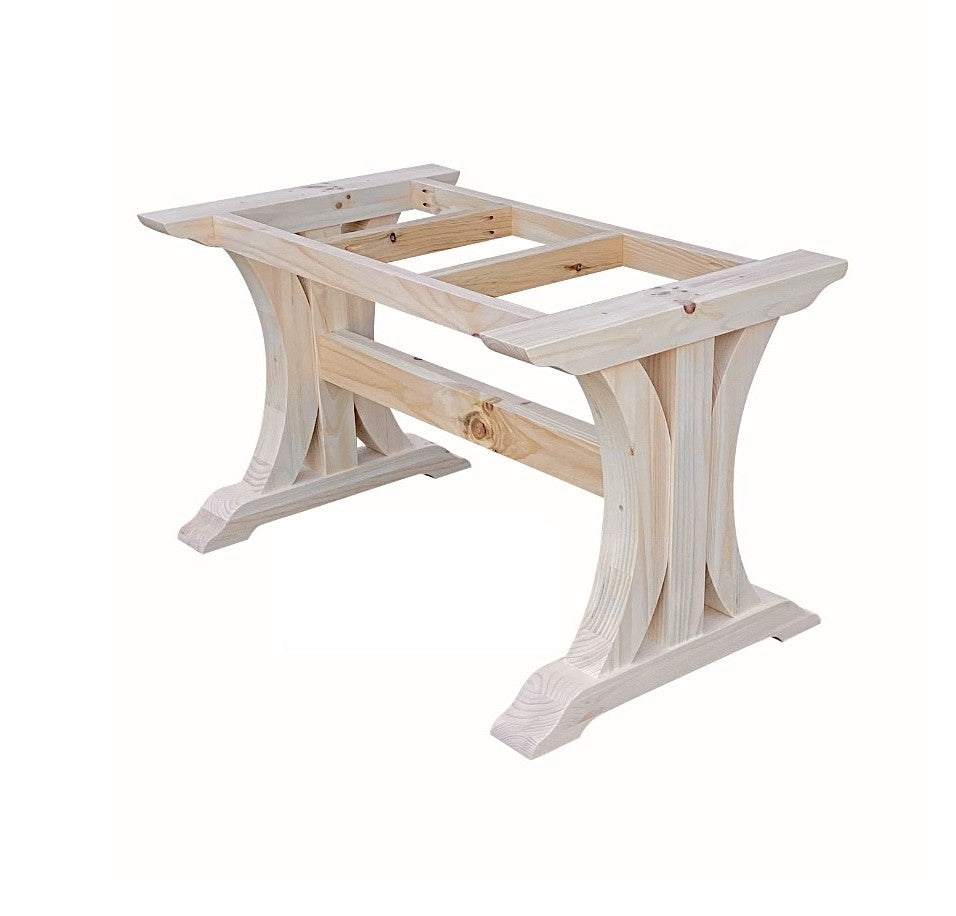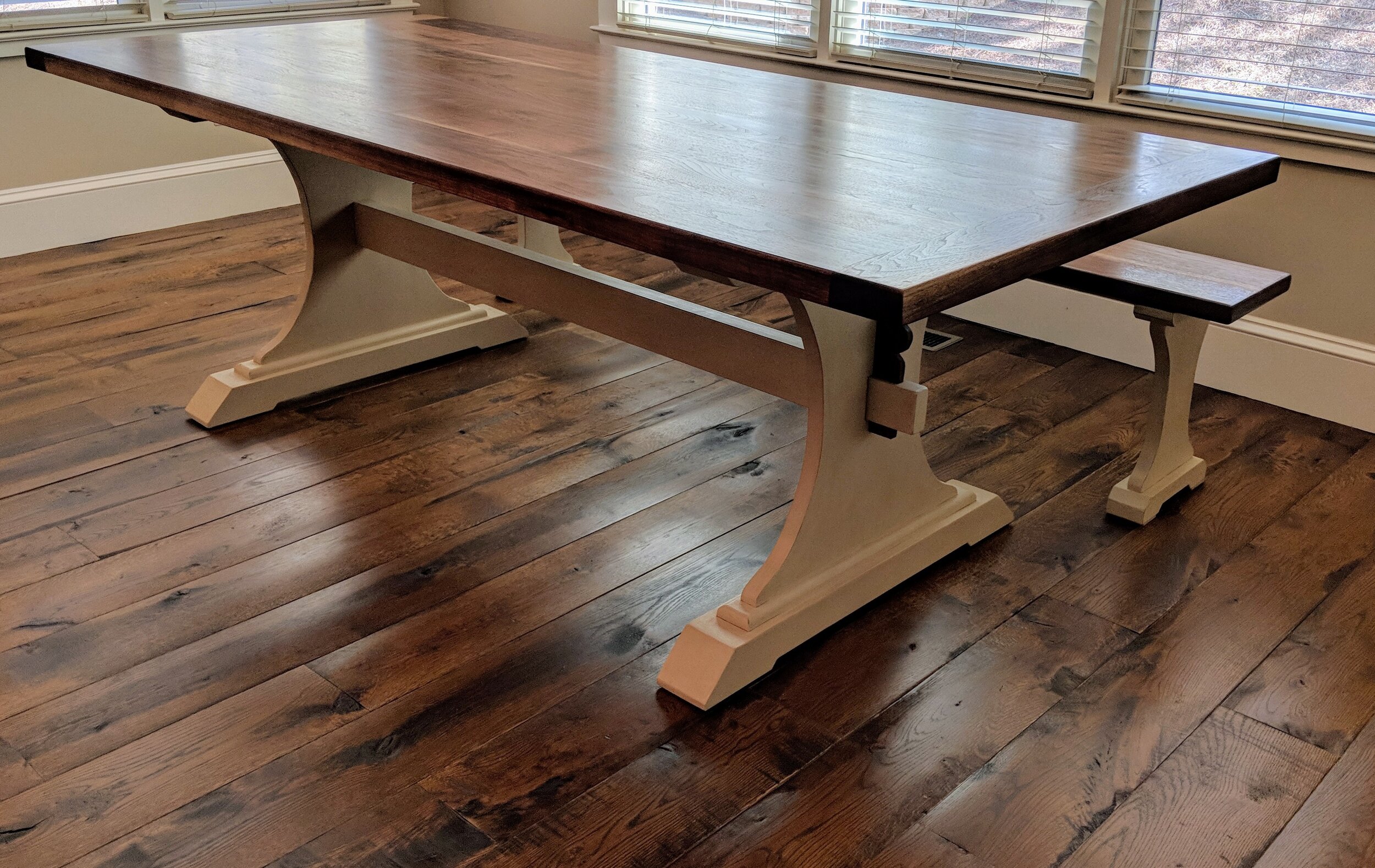Why Dining Room Table Legs Are Crucial for Your Table’s Stability
Why Dining Room Table Legs Are Crucial for Your Table’s Stability
Blog Article
How to Choose the Perfect Dining Area Table Legs for Your Home Decoration
Choosing the ideal dining space table legs is a nuanced process that needs mindful factor to consider of various aspects, including your area restraints, aesthetic preferences, and functional demands. The interaction in between products, styles, and measurements can significantly influence the ambiance of your dining area, making it crucial to approach this decision methodically. As you ponder the myriad options readily available, it becomes clear that the right selection extends beyond simple appearance; it can improve your total eating experience. What variables should you focus on to guarantee your choice complements your home's unique character?
Assess Your Dining Room
Analyzing your eating space is crucial for picking the right table legs that match both looks and performance. Begin by measuring the measurements of your dining location, including ceiling elevation, floor area, and proximity to various other furniture. This details will aid figure out the proper size and elevation of your dining table, which straight influences the selection of table legs.
Next, take into consideration the style and design of your eating space. For circumstances, an open-concept design might gain from table legs that provide aesthetic agility, such as slender metal or acrylic alternatives. Alternatively, a more standard setup could call for strong wooden legs that supply a sense of durability.
Evaluate the existing color palette and products in your dining area. Integrating the table legs with these components produces a natural appearance that enhances the general decoration. In addition, consider the functionality needed in your room. For example, if you frequently host big events, think about legs that provide extra assistance and stability.
Ultimately, an extensive evaluation of your dining space will certainly guide you in making an informed choice, making certain that your table legs not just improve the visual appeal but also offer sensible functions.
Consider Your Style Preferences
When choosing eating space table legs, it is essential to assess your individual style preferences, as they considerably influence the overall visual of your dining space. Your selection of table legs can either enhance or contrast with existing decoration, making it essential to straighten them with your recommended interior decoration style.
If your home leans in the direction of a contemporary aesthetic, take into consideration smooth metal or minimal wooden legs that offer a clean, uncluttered appearance. For a much more traditional strategy, elaborate wooden legs with detailed carvings can include a touch of sophistication and sophistication. Industrial designs take advantage of durable, raw materials such as redeemed timber and steel combinations, mirroring a tough charm.
Furthermore, farmhouse and rustic styles usually favor tough, chunky legs that evoke a sense of heat and comfort. Alternatively, if your decoration is diverse, you could pick non-traditional forms or a mix of materials to produce aesthetic interest.

Evaluate Product Options
The choice of material for dining space table legs plays a crucial role in both resilience and visual charm. Usual products consist of timber, steel, and composite alternatives, each offering distinctive qualities that can influence the general appearance and long life of your table.
Timber is a timeless option, understood for its heat and versatility. Hardwoods like oak and walnut offer outstanding stamina and can be ended up in various stains to match any design. Nevertheless, softwoods like yearn are much more susceptible to dents and scratches, making them much less excellent for high-traffic locations.
Steel legs, commonly crafted from steel or aluminum, exude modernity and industrial beauty. They are very resilient and resistant to wear, making them suitable for families with kids or constant events (dining room table legs). Furthermore, steel can be completed in different colors, enhancing the modification opportunities
Composite materials, such as MDF or laminate, deal cost and diverse layouts. While commonly much less resilient than strong timber or metal, page they can still give an elegant appearance and are typically easy to keep.
Eventually, the product you select should straighten with your lifestyle, visual preferences, and the degree of use your table will experience.
Determine Elevation and Size
Choosing the proper height and dimension for your dining area table is vital for both functionality and convenience. The standard elevation for dining tables normally ranges from 28 to 30 inches, enabling sufficient legroom for many people when seated. It is important to take into consideration the dimensions of your dining room and the types of chairs you prepare to make use of.

In addition, take into consideration the percentages of your eating area. A larger table in a spacious area can create a grand atmosphere, while a smaller table functions well in even more intimate setups. Inevitably, the ideal elevation and size will certainly balance with your overall style and boost the eating experience for you and your visitors.
Explore Personalization Opportunities

Furthermore, the design of the legs can be customized to fit numerous designs, such as rustic, contemporary, or industrial. Tapered legs can stimulate a mid-century contemporary feeling, while chunky, block-style legs may reverberate with conventional or farmhouse style.
Home owners can likewise check out color finishes, from all-natural wood spots to paint, enabling them to match or comparison with the tabletop and bordering design.
Moreover, leg elevation can be adjusted to suit particular seating setups or personal choices, enhancing both convenience and functionality.
Finally, unique embellishments, such as makings or decorative braces, can further customize the table legs, making the dining experience not simply a dish yet a statement item in the home. By considering these modification options, property owners can create an eating room table that really mirrors their originality.
Final Thought
Selecting the perfect dining area table legs requires mindful consideration of numerous aspects, including the measurements of the Look At This eating room, design preferences, material longevity, and preferred elevation. Personalization alternatives better enhance the ability to accomplish a cohesive visual that matches the total design. By systematically examining these aspects, home owners can ensure that the chosen table legs not only fulfill functional needs yet also add favorably to the eating experience and setting of the home.
Picking the ideal eating area table legs is a nuanced procedure that requires careful consideration of various components, including your room restraints, visual choices, and functional requirements.Evaluating your eating room is vital for selecting the right table legs that enhance both appearances and functionality.When figuring out dimension, gauge the location where the table will be placed to guarantee it fits pleasantly, permitting for at least 36 inches of clearance around the table for easy activity. A larger table in a roomy area can develop a grand atmosphere, while a smaller table works well in even more intimate settings.Selecting the excellent eating area table legs calls for cautious consideration of numerous aspects, including the measurements of the eating space, design preferences, material sturdiness, and desired elevation.
Report this page